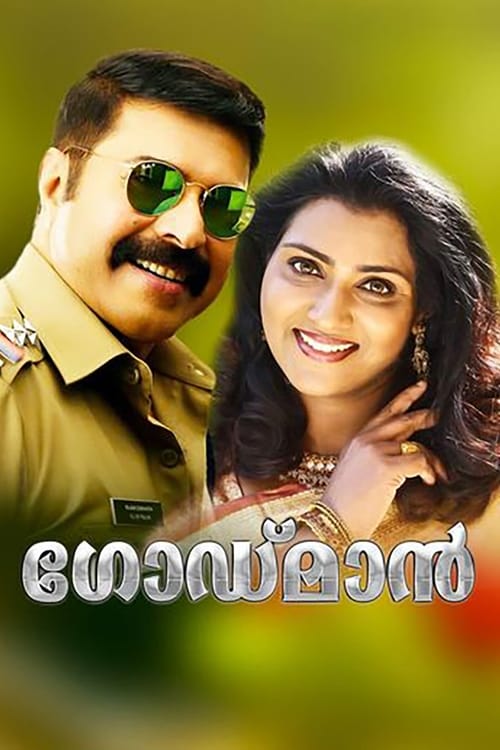No Image
Ask Your Own Question
What is the plot?
What is the ending?
In the ending of "Suvarna Simhasanam," the protagonist, Raja Varma, confronts the antagonist, who has been a source of turmoil throughout the film. The climax unfolds with a fierce battle for the throne, leading to a resolution that restores peace and justice. Raja Varma ultimately claims his rightful place, and the film concludes with a sense of hope and renewal for the kingdom.
As the final act of "Suvarna Simhasanam" unfolds, the tension reaches its peak. The scene opens in the grand hall of the palace, where Raja Varma stands resolute, his face a mixture of determination and sorrow. The air is thick with anticipation as he prepares to confront the antagonist, who has usurped the throne and caused chaos in the kingdom. The camera captures the flickering torches casting shadows on the walls, symbolizing the darkness that has enveloped the land.
Raja Varma, clad in royal attire, steps forward, his heart pounding with the weight of his lineage and the responsibility he bears. He recalls the sacrifices of his ancestors and the love of his people, fueling his resolve. The antagonist, a figure cloaked in arrogance and malice, stands defiantly at the other end of the hall, flanked by loyal guards. Their eyes lock, and a palpable tension fills the space, as the audience can feel the stakes of this confrontation.
The battle begins with a clash of swords, the sound echoing through the hall as Raja Varma fights not just for his throne but for the soul of his kingdom. Each swing of his sword is fueled by the memories of his family and the injustices faced by his people. The choreography of the fight is intense, with close-ups of their faces revealing the raw emotions--fear, anger, and a desperate hope for justice.
As the fight progresses, Raja Varma gains the upper hand, showcasing his skill and determination. The antagonist, realizing he is losing, becomes increasingly desperate, resorting to underhanded tactics. However, Raja Varma's unwavering spirit shines through, and he ultimately disarms his opponent. In a moment of vulnerability, the antagonist pleads for mercy, revealing a glimpse of his own fears and insecurities. Raja Varma, embodying the nobility of a true leader, chooses to spare his life, declaring that true strength lies in compassion.
With the antagonist defeated, the scene shifts to the people of the kingdom, who have gathered outside the palace, anxiously awaiting the outcome. As Raja Varma emerges, the crowd erupts in cheers, their faces illuminated with hope and joy. The camera pans over the sea of grateful faces, capturing the relief and happiness that washes over them. Raja Varma raises his arms, acknowledging their support, and vows to restore peace and prosperity to the land.
The final moments of the film depict a ceremonial crowning, where Raja Varma is adorned with the golden crown, symbolizing his rightful place as king. The music swells, and the atmosphere is filled with a sense of renewal. The camera captures the smiles of the people, the vibrant colors of the decorations, and the hopeful expressions of the children, signifying a brighter future.
As the credits begin to roll, the audience is left with the image of Raja Varma standing tall on the palace balcony, looking out over his kingdom. His expression is one of determination and hope, embodying the film's message of resilience and the importance of rightful leadership. The fate of the main characters is clear: Raja Varma has reclaimed his throne and the love of his people, while the antagonist, though spared, is left to reflect on his choices, a reminder of the consequences of ambition without integrity. The kingdom, now united under a just ruler, looks forward to a new era of peace and prosperity.
Is there a post-credit scene?
The movie "Suvarna Simhasanam," produced in 1997, does not have a post-credit scene. The film concludes its narrative without any additional scenes after the credits roll. The story wraps up with the resolution of the main plot, focusing on the themes of power, betrayal, and redemption, leaving the audience with a sense of closure regarding the characters and their journeys.
What motivates the character of Raja Varma in Suvarna Simhasanam?
Raja Varma, played by Mohanlal, is driven by a deep sense of duty and a desire to reclaim his rightful place as the king. His internal conflict stems from the loss of his father and the injustices faced by his family, which fuels his determination to restore honor and justice to his kingdom.
How does the character of Kalyani influence Raja Varma's journey?
Kalyani, portrayed by Suman Ranganathan, serves as a pivotal emotional anchor for Raja Varma. Her unwavering support and love provide him with the strength to confront his adversaries. Kalyani's own struggles and sacrifices highlight the personal stakes involved in Raja Varma's quest for justice.
What role does the antagonist, Keshavadas, play in the story?
Keshavadas, played by the actor K. P. A. C. Lalitha, embodies the corrupt forces opposing Raja Varma. His cunning and manipulative nature create significant obstacles for Raja Varma, representing the broader themes of betrayal and the fight against tyranny. Keshavadas's actions are driven by greed and a desire for power, making him a formidable foe.
How does the theme of loyalty manifest through the character of the royal family?
The loyalty of the royal family is depicted through their unwavering support for Raja Varma, especially during moments of crisis. Characters like Raja Varma's mother and loyal aides showcase their commitment to the royal lineage, emphasizing the importance of familial bonds and loyalty in the face of adversity.
What is the significance of the Suvarna Simhasanam (Golden Throne) in the plot?
The Suvarna Simhasanam symbolizes not only the throne of power but also the rightful claim to leadership and justice. Throughout the film, it represents Raja Varma's ultimate goal and the restoration of his family's honor. The throne's significance is intertwined with themes of legitimacy, heritage, and the moral responsibilities of leadership.
Is this family friendly?
"Suvarna Simhasanam," produced in 1997, is a film that contains several themes and scenes that may not be suitable for younger audiences or sensitive viewers. Here are some potentially objectionable or upsetting aspects:
-
Violence and Conflict: The film includes scenes of physical confrontations and battles that may be intense for children. The portrayal of violence is tied to the overarching themes of power struggles and revenge.
-
Emotional Turmoil: Characters experience significant emotional distress, including betrayal, loss, and despair. These intense emotional moments may be difficult for younger viewers to process.
-
Themes of Betrayal and Revenge: The narrative revolves around themes of betrayal and the quest for revenge, which may be complex and unsettling for children to understand.
-
Mature Relationships: There are elements of romantic relationships that may not be appropriate for younger audiences, including themes of love intertwined with conflict and sacrifice.
-
Cultural and Superstitious Elements: The film incorporates aspects of mythology and superstition that may be confusing or unsettling for some viewers, particularly those unfamiliar with the cultural context.
Overall, while "Suvarna Simhasanam" is a dramatic and engaging story, its themes and certain scenes may require parental guidance for younger viewers.






























